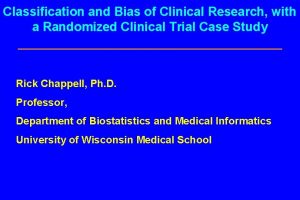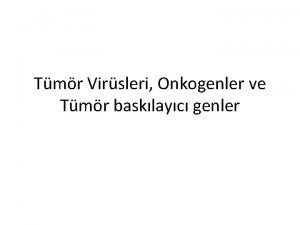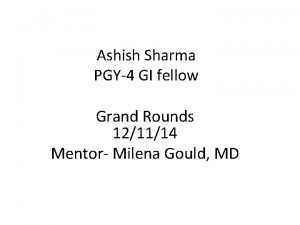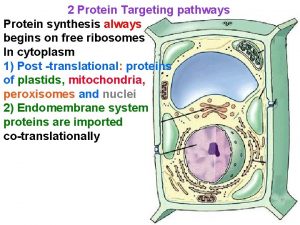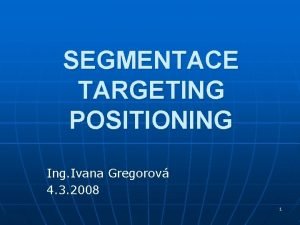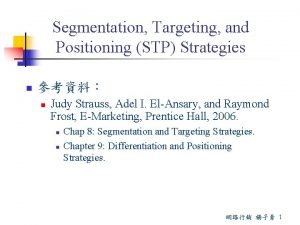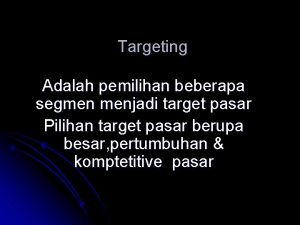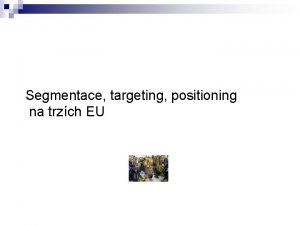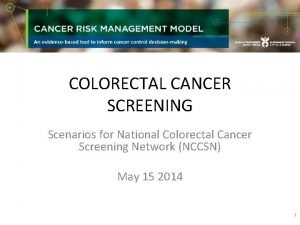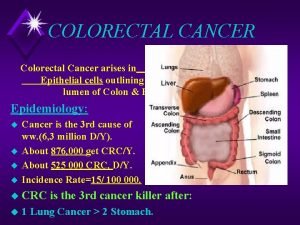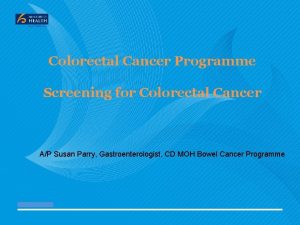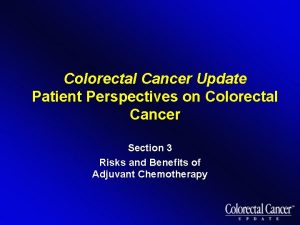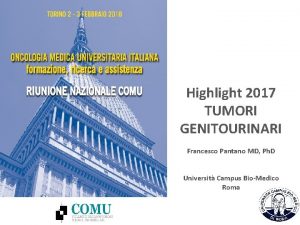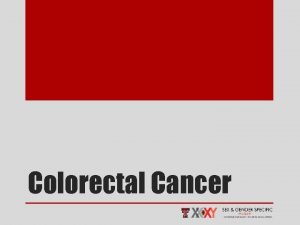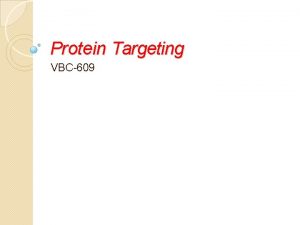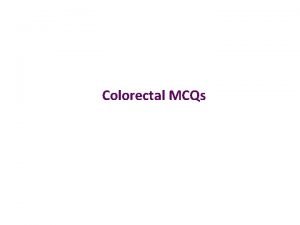Targeting new pathways in colorectal cancer Francesco Pantano



















































- Slides: 51

Targeting new pathways in colorectal cancer Francesco Pantano MD, Phd Oncologia Medica Università Campus Bio-Medico di Roma

2016: up to date The Tortoise and the Hare: lesson from Aesop’s fable Waiting for VEGF versus EGFR «final fighting» …. . NO «changing-practice» agents in 2016!!!

OUTLINE In the wake of the VEGF pathway: new agents In the wake of the EGFR pathway: new agents BRAF inhibition An old story: back to antimetabolites… TAS 102 Immunotherapy: pembrolizumab Lesson from gastric cancer: HER 2 rescue MGMT ipermethylation: temozolomide Gene profiling: molecular subtypes definitions

In the wake of the VEGF pathway: new agents VEGF pathway

Anti-angiogenetic signal: new insights! Ligand sequestration: MAbs, soluble receptors Indirect - inhibition of growth factors, HER-2 Receptor blocking Mabs, soluble receptors p 85 ras GRB 2 PLCg Inhibit receptor production; ribozymes Tyrosine kinase inhibition: TKIs SOS Inhibition of tyrosine phosphorylation and downstream signaling inhibition Transcription factor inhibition

RAMUCIRUMAB Ramucirumab is a recombinant human Ig. G 1 monoclonal antibody that binds to the extracellular domain of VEGFR-2, preventing ligand binding and receptor activation RAISE phase III trial Progression during or after bevacizumab, oxaliplatin, and a fluoropyrimidine R A N D O M I Z E (1: 1) Ramucirumab (8 mg/kg) and FOLFIRI* every 2 weeks per cycle N=536 Placebo and FOLFIRI* every 2 weeks per cycle N=536 Treatment until disease progression or unacceptable toxicity Primary endpoint: Overall survival Secondary end-point : PFS, ORR, Safety, PRO, PK, IG Tabernero et al, Lancet Oncology 2015

RAMUCIRUMAB Raise trial: Primary Endpoint OS MET Tabernero et al, Lancet Oncology 2015

RAMUCIRUMAB Raise trial: Secondary Endpoint PFS MET Tabernero et al, Lancet Oncology 2015

RAMUCIRUMAB Tabernero et al, ASCO GI 2015

DOVITINIB Dovitinib is an oral inhibitor of FGFRs and VEGFRs, PDGFR, c-KIT, FLT-3, CSF 1 R 1 Exhibits direct anti-tumor and antiangiogenic activity 2 1 Lopes de Menezes DE, et al, Clin Cancer Res. 2005; 11: 5281 -91 2 Renohowe PA, et al, J Med Chem 2009; 52: 278 -92

DOVITINIB Presented By Thomas John Semrad at Gastrointestinal Cancers Symposium 2016

DOVITINIB Pri ma ry En dp oin t. U nm et Presented By Thomas John Semrad at Gastrointestinal Cancers Symposium 2016

SORAFENIB in KRAS mutated pts: NEXIRI 2 trial

SORAFENIB in KRAS mutated pts: NEXIRI 2 trial Pri ma ry En dp oin t. M et

SORAFENIB in KRAS mutated pts: NEXIRI 2 trial

NINDETANIB Est im a Nintedanib is an oral, twicedaily, triple angiokinase inhibitor of VEGFR-1 to 3, PDGFR-a/b, and FGFR-1 to 3 ted co mi mp d-2 let 01 ion 6 da LUME Colon - 1 phase III trial te:

BRAF mutated m. CRC: VEMURAFENIB BRAF MUTATION BRAF «TARGETABLE» CASCADE

BRAF mutated m. CRC: VEMURAFENIB In CRC: PI 3 K/AKT pathway activation results in de novo and acquired resistance to BRAF inhibition Corcoran RB; Cancer Discovery 2012, 2: 227 -235

BRAF mutated m. CRC: VEMURAFENIB preclinical rationale TAKE HOME MESSAGE: Targeting EGFR and PI 3 K are viable combination strategies worthy of immediate clinical implementation in doublet or triplet regimens Corcoran RB; Cancer Discovery 2012, 2: 227 -235

In the wake of the EGFR pathway: new agents EGFR pathway

EGFR signal: new insights! Sym 004 is a 1: 1 mixture of two recombinant, human–mouse chimeric m. Abs directed against nonoverlapping EGFR epitopes (m. Ab 992 and m. Ab 1024) Phase I trial Phase II trial

An old story: back to antimetabolites… TAS-102

TAS-102 is an oral formulation of an antimetabolite inhibiting TP It consists of: - A cytotoxin (trifluridine), which inhibits cell growth - A thymidine phosphorylase inhibitor (tipiracil hydrochloride), which protects trifluridine from breakdown In a phase II trial, [1] TAS-102 demonstrated promising efficacy and a manageable safety profile in patients with m. CRC who were refractory or intolerant to standard chemotherapies [1] Yoshino et al, WCGIC 2014

TAS-102

TAS-102 Pri ma ry En dp oin t. M et

Progress in the Treatment of Colorectal Cancer Treatment First-time OS Second-line PFS OS PFS Bevacizumab Third-line and beyond OS PFS - - Cetuximab Panitumumab Aflibercept Regorafenib TAS-102 - -

Immunotherapy in CRC Anti-PD L 1

Immunotherapy in CRC

Immunotherapy in CRC • Mutational burden in human tumours varies • • The prevalence of somatic mutations across human cancer types. Signature of mutational processes in human cancer; Alexandrov et al, Nature 500, 415 -21, (2013)

Immune Checkpoint Inhibition PD-1 Blockade in MMR-Deficient Tumors: Background Somatic mutations encode for mutant proteins possibly recognized as “nonself” immunogenic antigens Prevalence of somatic mutations increased in tumors with genetic defects in MMR deficiency common in particular tumor types, such as CRC, ampullary cancer, and endometrial cancer Pembrolizumab: humanized Ig. G 4 monoclonal antibody inhibiting PD-1 immune checkpoint Current study evaluated whether MMR-deficient tumors demonstrate enhanced susceptibility to immune checkpoint blockade Le DT, et al. NEJM 2015. .

Immune Checkpoint Inhibition PFS Le DT, et al. NEJM 2015. .

Immune Checkpoint Inhibition Le DT, et al. NEJM 2015.

Immune Checkpoint Inhibition PD-1 Blockade in MMR-Deficient Tumors: Analysis of Mutations MMR-deficient tumors highly mutated – ~ 1700 vs ~ 70 mutations in MMR-proficient tumors (P =. 007) – Mutation burden significantly associated with efficacy (P =. 02) Le DT, et al. ASCO 2015. Abstract LBA 100.

Immune Checkpoint Inhibition KEYNOTE 164 phase II trial

Immunotherapy in CRC ONGOING NEW DRUGS DEVELOPMENT

Immunotherapy in CRC Bavituximab targets phosphatidylserine, the predominant immunosuppressive phospholipid exposed on tumor endothelium. In addition to blocking vasculogenesis, bavituximab repositions macrophages from the M 2 to the M 1 phenotype, promoting dendritic cell and cytotoxic T-cell activation. It is currently in phase I testing as an adjunct to capecitabine and radiation in patients with localized rectal cancer (NCT 01634685) Urelu-mab, currently in phase I development (NCT 02110082), is a monoclonal agonistic antibody toward CD 137, which is a co-stimulatory molecule expressed on activated NK and memory T cells. V Ensituximab (NPC-1 C), a chimeric antibody that promotes antibody-dependent cell mediated toxicity, is directed against the MUC 5 AC-related antigen, which mediates mucosal immunity. Initial results of a phase I/II trial have been encouraging, with a median overall survival of 10. 2 months in patients with CRC whose disease progressed on at least two lines of therapy (NCT 01040000).

Lesson from gastric cancer HER 2

HER 2 5, 4% of metastatic CRCs have HER 2 amplification

HER 2 More than 900 patients were screened Previous lines medium number = 5 The HERACLES trial met its primary endpoint with 8/23 objective responses in pts heavily pretreated with standard therapies, including EGFR-targeted agents, indicating that the dual anti HER 2 therapy is effective and deserves further clinical assessment in earlier lines of treatment of HER 2+ m. CRC patients.

HER 2 Presented Salvatore Siena at Gastrointestinal Cancers Symposium 2016

MGMT ipermethylation Temozolomide

MGMT ipermethylation - The DNA repair gene O 6 -methylguanine-DNA methyltransferase (MGMT) is responsible of the elimination of alkyl groups from the O 6 -position of guanine. - If inactive, it may be involved in early steps of colorectal tumorigenesis through an increase of mutational rate—particularly, G-to-A point mutations of KRAS gene

MGMT ipermethylation 40% From December 2012 to May 2014: - 150 pts - All progressed under standard therapy - TMZ 150 mg/m 2 1 -5 q 28 - I° EP: PFS

Gene signature Genomic landscape

Gene signature

Gene signature

Gene signature

Gene signature

Gene signature Bertotti A, et al. Nature 2015. .

CONCLUSIONS No real news in terms of new active agents for colorectal cancer Immunotherapy showed a promising landscape: studies examining the effect of MSI status, as well as the role of Lynch and other hereditary syndromes, on the efficacy of immune-based regimens will be especially revealing. In patients with refractory colorectal cancer, TAS-102, as compared with placebo, was associated with a significant improvement in overall survival. (RECOURSE Clinical. Trials. gov number, NCT 01607957. ) Although a minority of CRC patients exhibited HER 2 gene amplification (~6%), these patients would be potential candidates for anti-HER 2 therapy …. . genomic. . It’s evolution baby !

f. pantano@unicampus. it
 Colorectal cancer drug trial
Colorectal cancer drug trial Colorectal cancer
Colorectal cancer Amsterdam criteria
Amsterdam criteria Protien sorting
Protien sorting Ann lyons colorectal surgeon
Ann lyons colorectal surgeon Hnpcc
Hnpcc 7 pathways
7 pathways New pathways for youth jobs
New pathways for youth jobs The new prostate cancer infolink
The new prostate cancer infolink Market segmentation and targeting ppt
Market segmentation and targeting ppt Nivea positioning statement
Nivea positioning statement Resume jurnal
Resume jurnal Joint targeting cycle
Joint targeting cycle Mktg 8
Mktg 8 International market segmentation
International market segmentation Concentrated marketing
Concentrated marketing Polygon targeting
Polygon targeting Presciber segmentation
Presciber segmentation Creating value for target customers
Creating value for target customers Undifferentiated targeting strategy
Undifferentiated targeting strategy Concentrated targeting
Concentrated targeting Segmentation and targetting
Segmentation and targetting Alcohol ads targeting youth
Alcohol ads targeting youth Gdn targeting options
Gdn targeting options Coca cola stp
Coca cola stp Focused targeting strategy
Focused targeting strategy Stp concepts
Stp concepts Sony market segmentation, targeting and positioning
Sony market segmentation, targeting and positioning Segmentation targeting differentiation and positioning
Segmentation targeting differentiation and positioning Chosen lesson 7 segment 1
Chosen lesson 7 segment 1 Nokia market segmentation targeting and positioning
Nokia market segmentation targeting and positioning Nivea segmentation, targeting and positioning
Nivea segmentation, targeting and positioning Global market segmentation
Global market segmentation Segmentation targeting and positioning of nestle
Segmentation targeting and positioning of nestle Marketing segmentation targeting positioning
Marketing segmentation targeting positioning Market segmentation, targeting and positioning
Market segmentation, targeting and positioning Marketing del targeting
Marketing del targeting Targeting adalah
Targeting adalah Rural market segmentation
Rural market segmentation Bssu
Bssu Psychographic segmentation of nivea
Psychographic segmentation of nivea Benefits sought segmentation
Benefits sought segmentation Segmentation targeting differentiation and positioning
Segmentation targeting differentiation and positioning Concentrated marketing
Concentrated marketing Psychografická segmentácia
Psychografická segmentácia Resume jurnal
Resume jurnal Jurnal tentang stp
Jurnal tentang stp Definisi targeting
Definisi targeting Vertical targeting
Vertical targeting Connection targeting
Connection targeting Global market segmentation
Global market segmentation International positioning strategies
International positioning strategies
